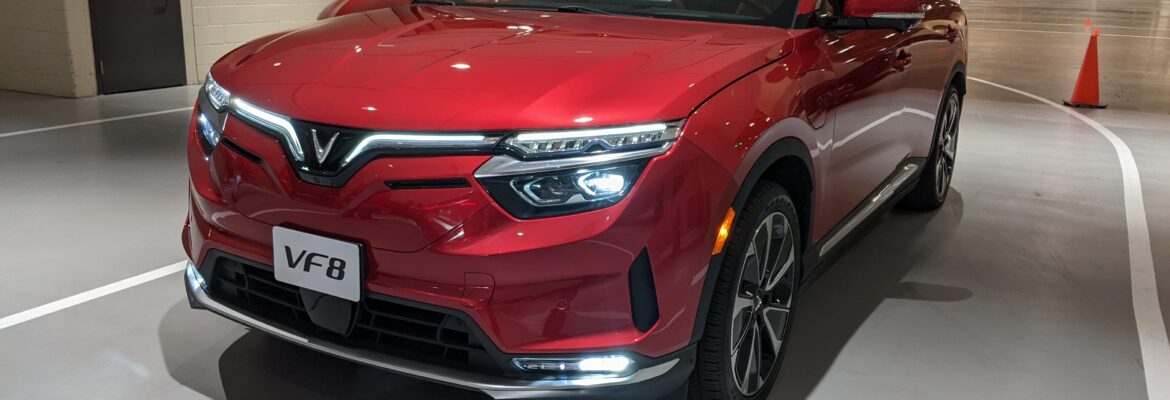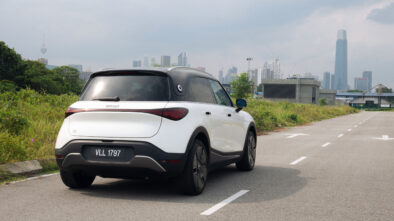VinFast & the Curious. Quick drive in the VF8!
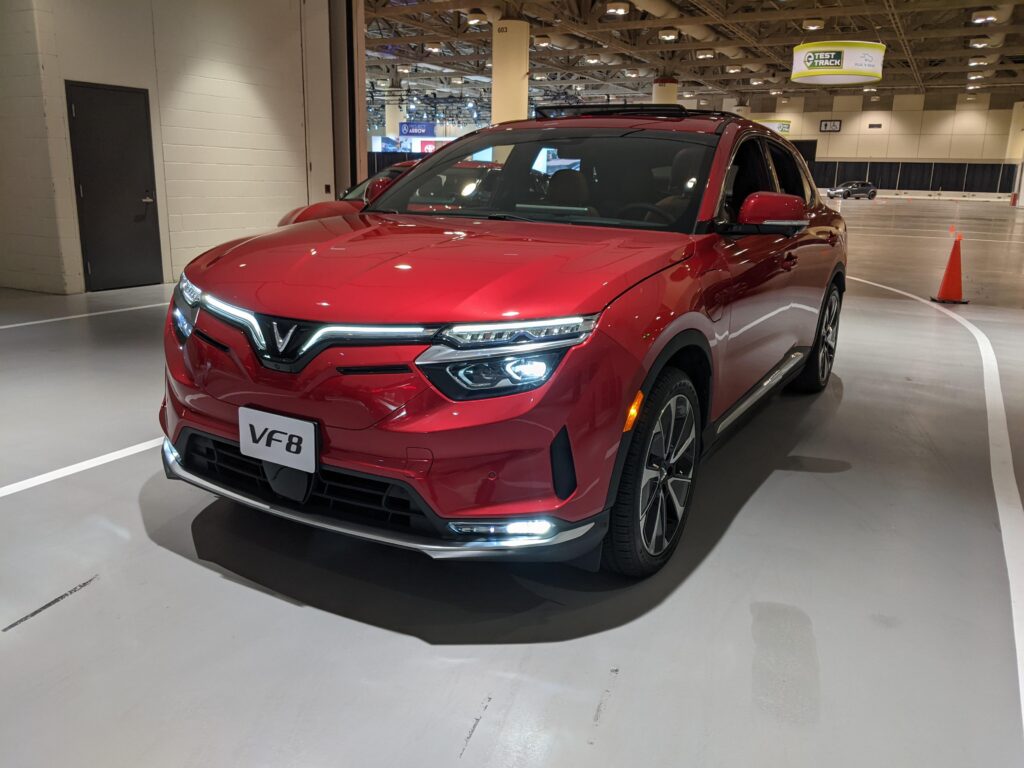
Introduction
2023 marks a rather interesting year for the Canadian International AutoShow – for one, it is finally back in operation after a pandemic hiatus of 2 years (the last autoshow was in February 2020, mere weeks before the stay-at-home guidance was issued, making the Canadian International AutoShow one of the last auto shows in the world pre-pandemic). The return has been well received by the public here – with record number of people coming by to visit in the first weekend of the show – albeit despite the absence of some common household names like Ford, Honda and Mazda, as well as many European marques.
Even more interestingly, this year’s auto show also marks the entry of a new manufacturer in the Canadian market – Vinfast. The North American car market hasn’t seen too many all-new brands entering the fold and Vinfast, for the uninitiated, is the automotive division of the Vingroup – a Vietnamese conglomerate – and has become the first domestic car brand for Vietnam. Vinfast initially started out in 2017 with designing cars based off older BMW platforms (i.e. the older F10 5 Series and F15 X5) with the help from Pininfarina, but have now moved on to producing primarily electric vehicles. In more recent times, Vinfast has begun entering the European and North American markets – with a slew of electric SUVs of varying sizes. To begin their entry into North America, the brand will be selling their VF8 midsize SUV and VF9 full size SUV. We got a chance to take a look and a quick spin with a pre-production VF8, so read on to find out more about this intriguing upstart brand.
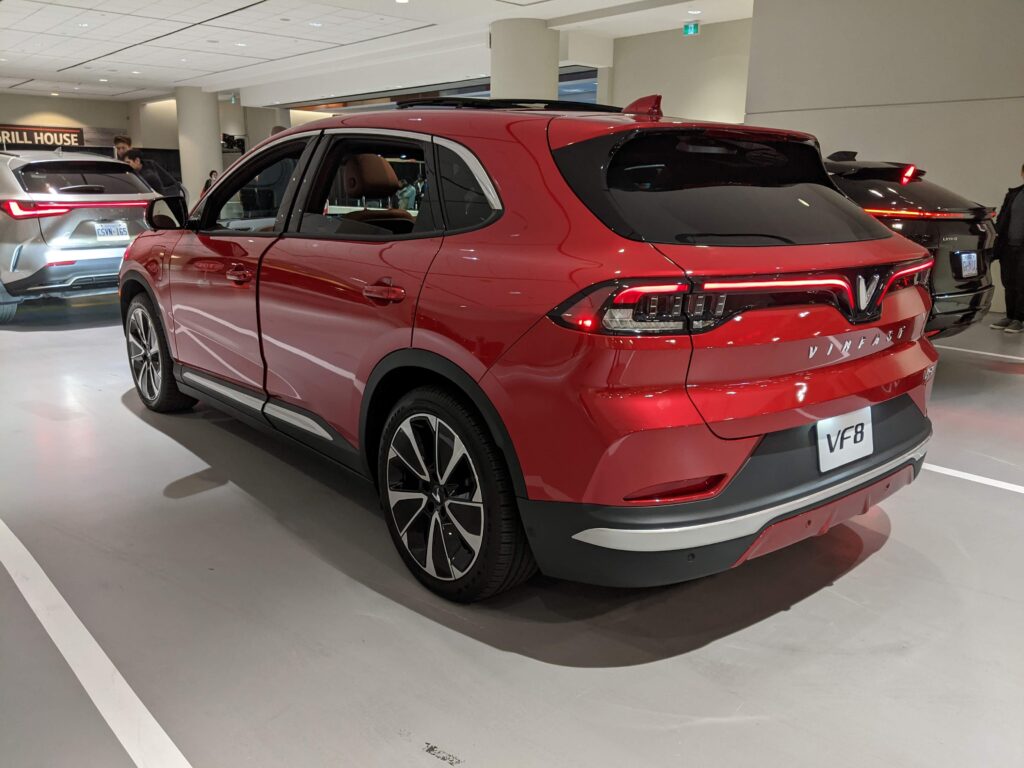
Sizing & Styling
To begin, the VF8 is a mid-sized SUV. Think of it as an SUV that is about the size of a BMW X3 or Audi Q5, with the Vinfast having a wheelbase that is slightly longer than the current BMW X3 by nearly 90mm. However oddly enough, the interior of the VF8 does feel a tad bit tighter than BMW’s offering.
Exterior styling is pretty decent with nothing that looks too outlandish. The front is dominated by a large chrome “wing” that connects into the black plastic that houses the Vinfast logo. The radar module for the adaptive cruise control is neatly packaged in the lower grille, much like the X3. The VF8 as standard does come equipped with automatic adaptive full-LED headlights with active high beam – it is not a matrix or laser light system but seemed bright enough when they were enabled during our quick test drive.
The side profile and rear three quarters of the VF8 have a somewhat resemblance to the Porsche Macan in some sense – the rear hips over the rear wheels are quite pronounced and flow very similarly to the way the Porsche Macan is styled – and likewise the rear hatch glass as well. The rear tailgate has a large LED light bar that extends the entire trunk (complete with full LED rear lights) that is currently all the rage in the industry right now – and incidentally, also looks somewhat like what is in the current Macan.
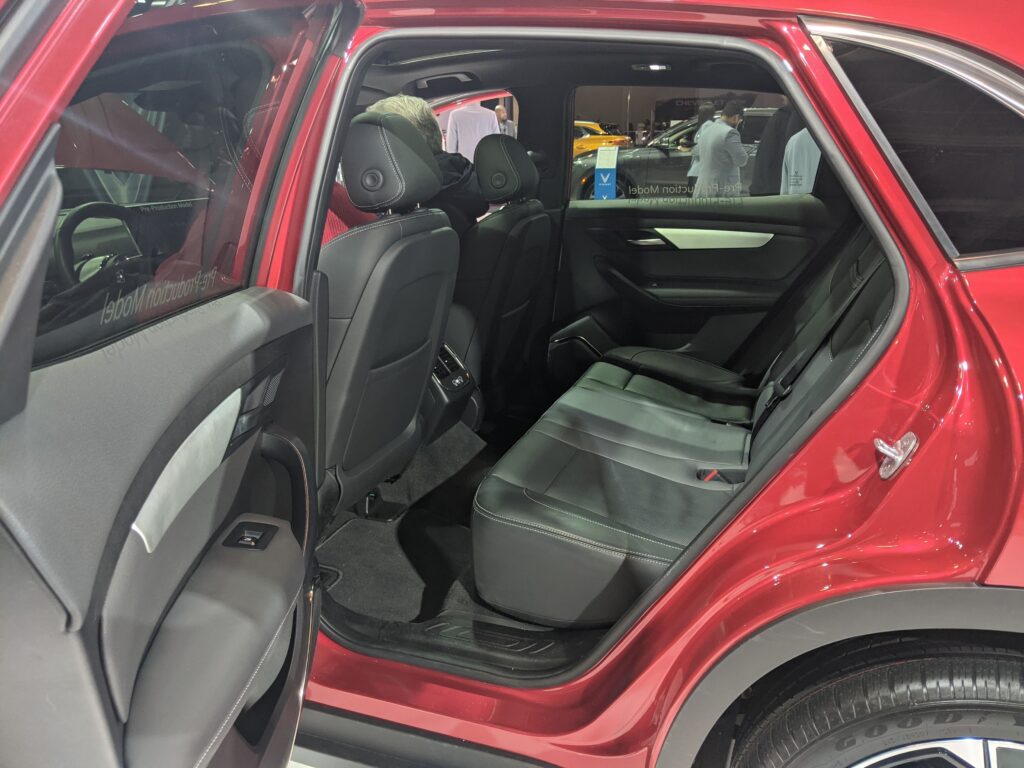
The VF8 by default comes equipped with 19” wheels on the Eco model, while the Plus model (which is pictured here and on our test drive) comes equipped with 20” wheels instead. The slightly larger wheel and more powerful electric motor does reduce range by about 6% (471km on the Eco vs 447km on the Plus) according to estimates provided by Vinfast. Unfortunately due to the fact that the cars on display & test were pre-production and our test drive being rather limited, we were not able to test how true the range numbers were.
The Plus model also comes equipped with a large panoramic sunroof – something that the Eco model does lose out. With the darker interior colors, the sunroof does greatly improve the ambience of the cabin. On a whole – the exterior is best described as “generic premium SUV” – it is nothing too wild – but nor is it offensive, which is probably a good thing for an up and coming brand trying to penetrate the competitive North American EV market.
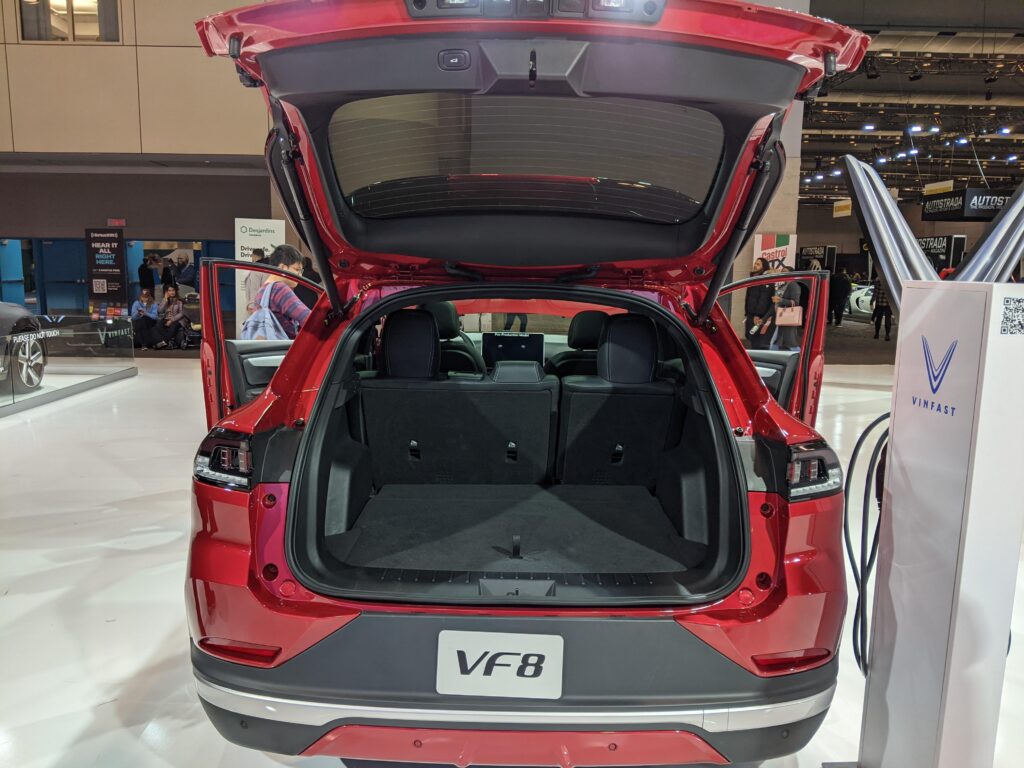
Practicality
Boot space is relatively disappointing from first impressions – despite the VF8 being larger than the X3 and the Q5, it is very clearly much smaller than both of these models. The boot space itself appears to be less wide and a fair bit shorter (likely not helped by the more reclined rear seats compared to the X3 and Q5). From first impressions it likely should not have any issues taking in one large suitcase, but two large suitcases may be a tight squeeze, which is quite the bummer considering the BMW iX3 has little to no compromises to its boot space despite having the electric motor mounted in the rear. The cars on display did not have any form of parcel shelf or tonneau cover, however, we did see there were some grooves in place in the plastic molding on the boot walls to hold a tonneau cover. For additional space, it is possible to fold the rear seats down manually in a 60/40 fashion.

Below the boot floor, there is not much space – it’s mostly sufficient for one to store the portable domestic charger for and the tire sealant kit. However, this is not too abnormal, and is generally similar to what we have seen in other EVs of similar size and positioning. The front-trunk/boot aka frunk does exist on the VF8, but much like the Hyundai IONIQ 5 and Kia EV6, it is quite limited in terms of space. The show cars we had did have the fuse box opening and 12V battery door opening taped up, however it was rather impressive that Vinfast did take the effort to cover up most of the front in the effort to make sure the frunk looked neat. Size wise, the frunk space depth is about the same as what is in the Kia EV6 and Hyundai IONIQ 5, albeit a little oddly shaped.
In terms of in cabin storage, the VF8 is pretty generous, again, relatively normal in terms of the execution. Unlike some of the newer EVs that have drawers instead of regular drop down glove boxes (i.e Hyundai IONIQ 5), the VF8 is pretty ordinary. Thankfully, unlike some newer vehicles, the VF8 uses a traditional mechanical latch to operate the glovebox which is of good size. The door cards are also generously spaced, both front and rear.

Interior Comfort
Vinfast claims that the Eco model will come equipped with leatherette seats – which we were not able to sample – however the Plus models that we tried all came equipped as standard with “vegan leather” seats – which are essentially synthetic leather seats. Vinfast’s execution of this is so-so for the most part, the material itself feels a bit more synthetic than most of the other brands in the market. The seats themselves are well padded, despite being a little on the firmer side. It is not going to win any awards against, say, Volvo seats, however it is a lot better than some other large American SUVs (i.e. the Cadillac Escalade, Jeep Grand Cherokee) in terms of seat padding.
The Plus does have a little more power adjustment options than the Eco model and there’s an option to save the driver seat position to the driver profile on the touchscreen (more on the touchscreen later). Thankfully, the seat controls are relatively easy to operate, with them being located where seat controls are – however, for some reason Vinfast decided to use the Tesla playbook and move the steering wheel and side mirror adjustment to the touch screen – where the user has to start the adjustment process through the screen and actually perform the adjustment using the steering wheel controls. This is just a very convoluted system in order to save a little on buttons on the steering column and driver’s door – and is as clunky as what is in the Tesla.
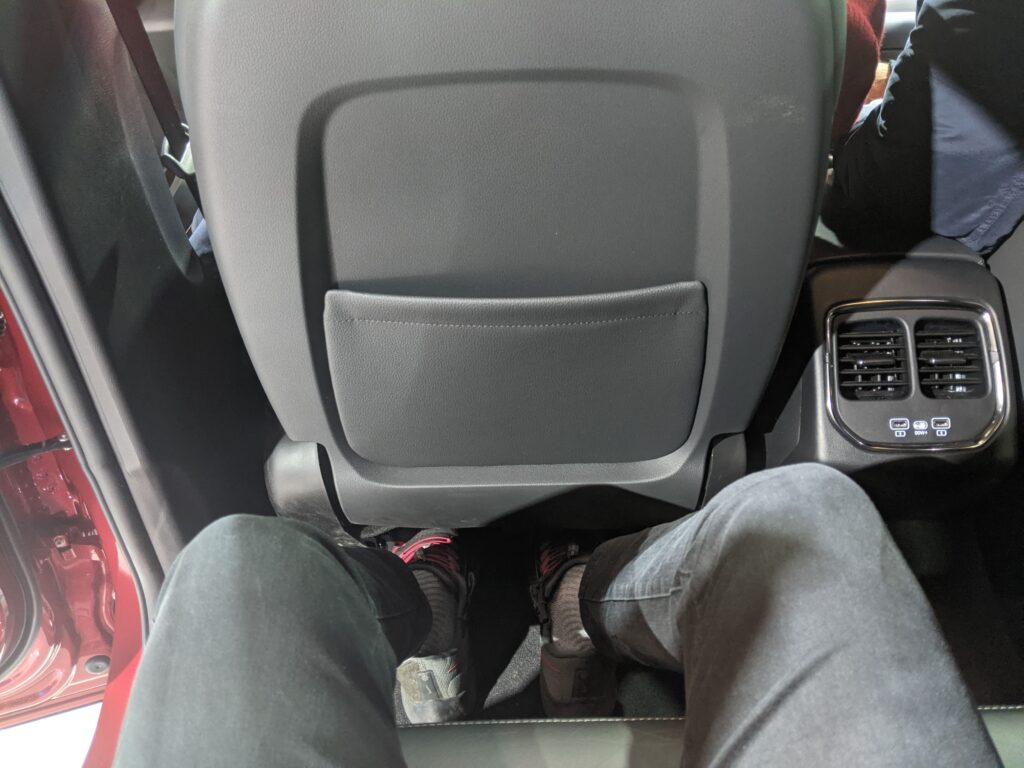
The rear seats are generally alright – we did notice that the rear seat recline is a little too much for our liking. It probably might work better for taller passengers (helps in providing headroom, although headroom was generally abundant anyway). Where the rear seat does (shockingly) fall apart in a modern all-new EV is that the rear floor is a tad bit raised and the rear bench is too low – which means when you are seated, your knees will be up in the air.
This is fine for maybe children, but even for an adult about 170cm in height, we found it pretty uncomfortable after a short while. Surprisingly this is quite common in quite a few all-new modern EVs (we have seen this in the Lucid Air, Tesla Model S and Nissan Ariya), although there are a few legacy-platformed EVs like the BMW iX3 that do not have this issue. Legroom and foot room was generally alright, and was very similar to the Audi Q5 and BMW X3 but overall comfort is still no match to any of the European competitors at this time.
Visibility as a whole seemed quite decent in our brief initial impressions – the glasshouse of the VF8 is generous, again helped by more conventional proportions. The mirrors are also generously sized, providing a good view out once they were adjusted (again, with the clumsy touchscreen + steering buttons). The rear does benefit from the large, conventionally sized windows – reducing the claustrophobic ambience that tends to plague cars with an all black cabin. The other display unit that came with a beige-trimmed was almost airy even, with the pairing of the light seats and good amount of light entering the cabin in the back seats.
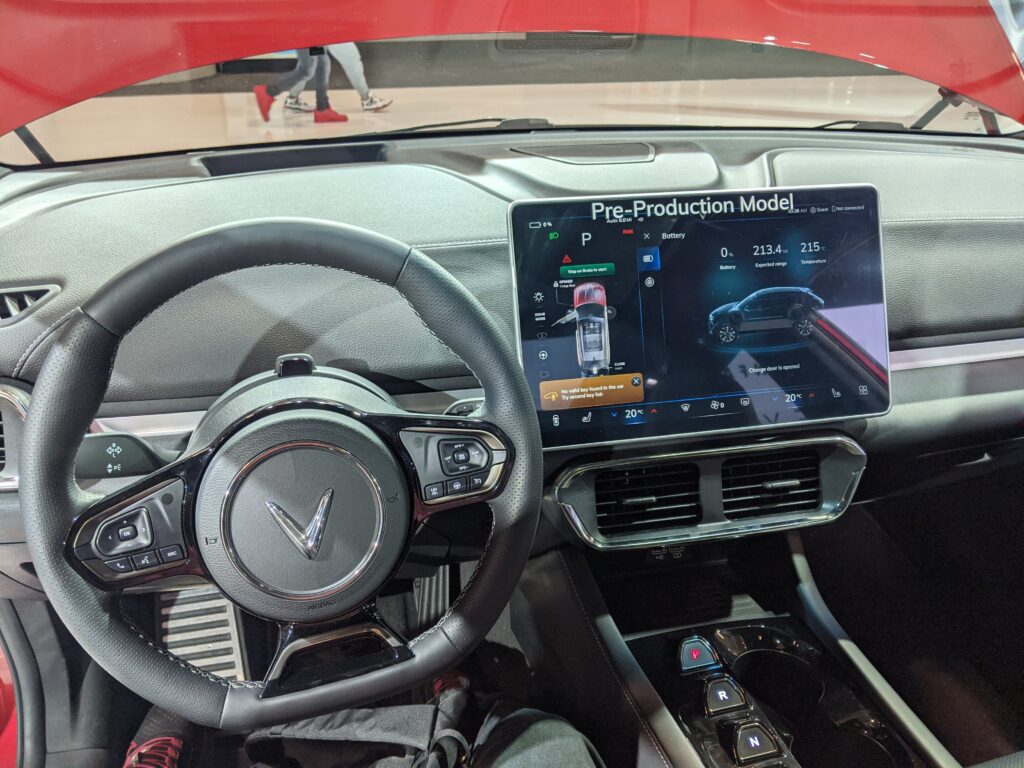
Ergonomics & Onboard Technology
Oftentimes, ergonomics is where we tend to see many car manufacturers – even established brands – trip over, even despite years of experience (see the new Volkswagen Golf’s touch buttons on the steering wheel!). At first glance, the Vinfast VF8’s ergonomics don’t seem too bad, everything generally falls to the hand pretty naturally. However, after some time with the VF8, it was pretty easy to see where Vinfast seemed to have made some ergonomic compromises for the sake of visual appeal.
Aside from the convoluted mirror and steering wheel adjustment mentioned earlier, another poorly executed piece has to be the transmission shift buttons. Shift buttons are not new, Honda has had this for years for their models equipped with the 9 speed automatic in the North American markets for its Honda and Acura brand.
Where the Vinfast differs from the typical button shifter is their use of individually placed buttons – with no form of differentiation between them. As a result, it is totally impossible to be able to easily shift between gears through muscle memory, as without looking down you won’t be able to ascertain which gear you will be going into. Most manufacturers who use the button shifter will either line the buttons in the driver’s line of sight (GM does this on their newer trucks) or use ridges or different shaped buttons like Honda to denote different buttons. We find this actually particularly dangerous as it is very easy to accidentally engage reverse or drive, when actually the driver intended to enter into park or neutral. The buttons themselves do not feel great – they feel rather mushy and you don’t really feel like you’ve actually successfully engaged anything (there’s no tactile feedback), and the icing on the cake has to be the fact that the button to engage Drive is actually rather far back, requiring a little backward arm extension to engage the gear. This truly was one of the most disappointing parts of the VF8 and definitely would put us off, as such a simple feature doesn’t work well – and the execution did not need to be re-invented by any means.
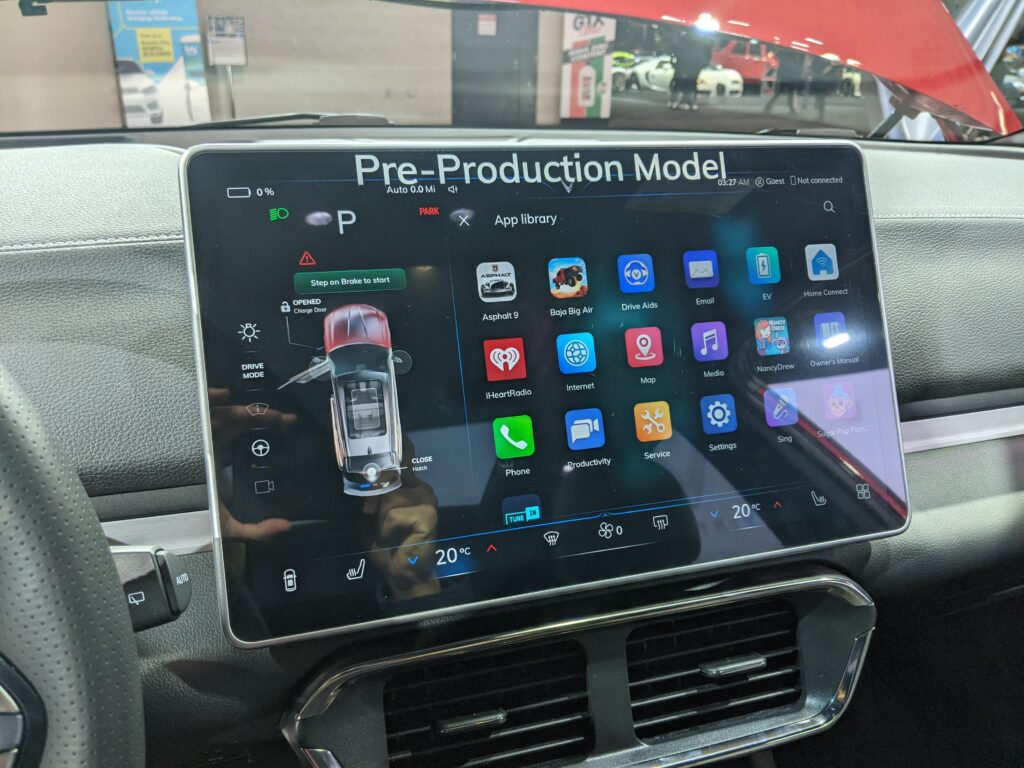
The next ergonomic blunder has to be the touch screen. While Vinfast has indicated this is a pre-production model (in case the big stickers don’t give it away), the user experience in general seems quite similar to what we have seen in the model being sold in Vietnam. The car on display was definitely in a “showroom” mode, for obvious reasons – however we did get to play with the touchscreen for a bit while on our test drive, and our impressions with the show units were similar to what was being used during the test drive.
In summary – Vinfast is trying really, really hard to mimic the Tesla experience in their vehicle. The screen in general is bright and crisp – which is pretty nice to see, however, that’s where the positives end. In direct light (as seen in some earlier pictures in this review), there’s a fair bit of glare on the screen. We don’t notice this as much on Teslas, likely because of the screen angle in Tesla vehicles avoiding most of the glare. However, physical limitations and some random glitches with the screen aside, the bigger issue was it felt like there was a lot going on that screen.

There’s no central information display in front of the driver – it is only this screen (and on the higher end VF8 Plus, a basic heads-up display, that wasn’t the clearest either). In the case when there’s only a single central screen to display many important driving statistics (for example, vehicle speed), it has to be easy to read at a glance. Unfortunately in the case of the VF8, the content overload on the screen made it very difficult to see what was going on while the vehicle was in motion.
This is compounded by the fact that the HVAC controls unfortunately were also baked into the screen as well. To be fair, Vinfast isn’t the only one guilty of messing up their touchscreen-based HVAC controls (BMW’s new iDrive 8 on the new iX and i4 is also clunky as well) – but it definitely felt like it took a lot of effort to do basic things like engaging the seat heaters, something that is super important in markets like Canada.
There were some apps and a Chrome-based web browser present, but we did not see any app store enabled on the demo cars. We also did not get to interact with the Android Auto and Apple CarPlay experience either, as most of the connected services were temporarily disabled on the show cars.

Generous standard safety equipment
As standard, all VF8s come equipped with a comprehensive (on paper) ADAS system complete with a driver monitoring system to ascertain if a driver is still paying attention to the road when the VF8 is in adaptive cruise + lane centering mode, much like how BMW has its driver monitoring system on models equipped with the Driving Assistant Professional. All the ADAS features, including the adaptive cruise control, blind spot assist, lane keep assist and lane centering assist are standard regardless of which trim of VF8 is selected. This is of course in addition to autonomous emergency braking, automatic high beam and adaptive headlights. The VF8 does come equipped with a 360 degree camera system – and a separate camera module that functions as a reversing camera, which is a rather interesting choice. However, the reverse camera and 360 degree camera only exhibited average picture quality despite the bright show floors, with nothing special to write home about
In terms of passive safety, the VF8 is also generously equipped, with a total of 11 airbags in the North American model (complete with driver and front passenger knee bags, rear outboard seat-mounted side airbags, and a centre airbag between the driver and front passenger). It remains to be seen if the VF8 will maintain the same passive safety setup for other markets as well, as most brands (even European marques like BMW) do omit knee airbags for the European markets and Asian markets due to different testing standards, or only offer knee airbags only on the driver side (Toyota, Volvo and Jaguar Land Rover offer this typically, without the rear seat side airbags as well).
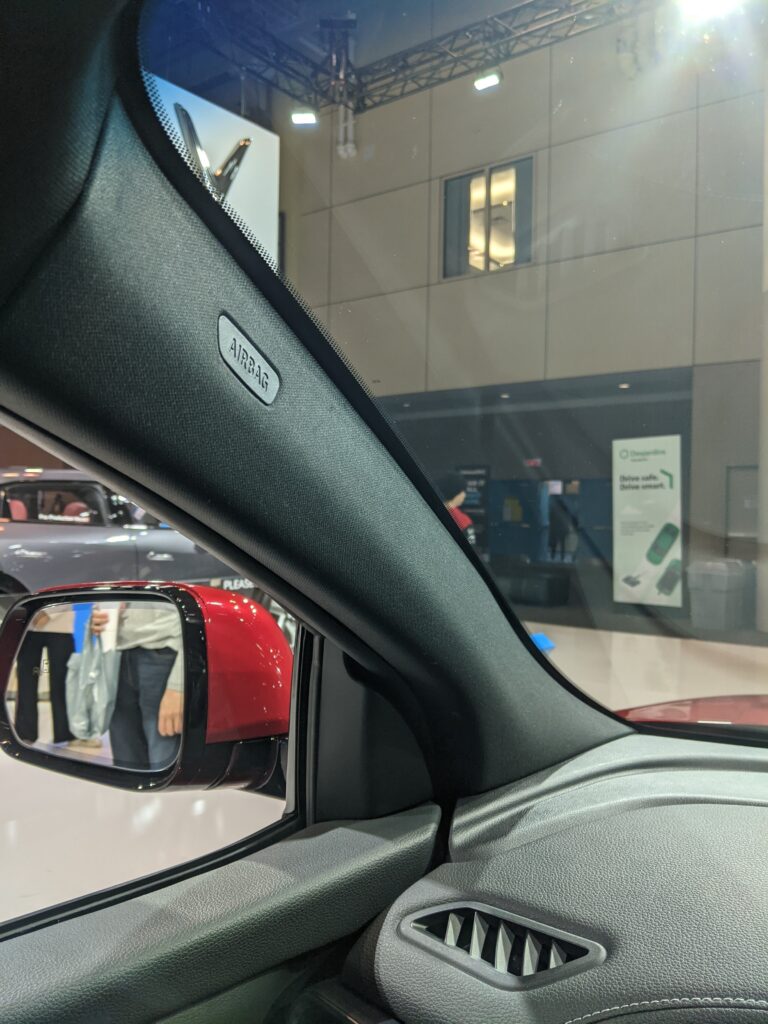
However, regardless of how comprehensive the active and passive safety systems are on paper – the one big caveat here is we did not get a chance to test the VF8’s ADAS setup on public roads, so it is very hard to judge how good these systems work in real life – as a lot of these systems are also very dependent on how well calibrated they are. We have heard of instances where poorly calibrated ADAS setups have made it out to production cars (thankfully identified before customer deliveries) in the case of the Chery Omoda 5 in Australia.
Vinfast also claims that the VF8 will comply with the US NHTSA’s 5 star rating – however, at time of writing the VF8 has not had its official NHTSA rating released, nor has it been crash tested by IIHS. The VF8 has only completed its ASEAN NCAP and EURO NCAP testing, with a respectable 5 star and 4 star rating respectively. However, keep in mind that the NHTSA and IIHS testing process and standards are typically higher than the EURO NCAP and ASEAN NCAP process, and there are a fair number of cases where the EURO NCAP 5 star does not translate to a 5 star NHTSA rating (case in point being the Nissan X-Trail / Rogue’s EURO NCAP 5 star becomes a NHTSA 4 star).

Fit and Finish
While we were able to see a fair number of BMW partsbin items being used throughout the cabin – unfortunately, the Vinfast did not exhibit modern BMW-levels of fit and finish. It’s not terrible in the grand scheme of things, nothing felt loose and general panel gaps in the interior as well as exterior looked decently consistent. However, the materials used in general were not particularly rich (especially considering the pricing of the VF8 – which we will discuss later in this review).
There was a fair amount of cheaper plastics used in the lower parts of the cabin, and the injection molded soft-touch plastics for the dashboard were not the best we have seen amongst modern car manufacturers. Controls, buttons and knobs (specifically those not sourced from the BMW parts bin) felt rather cheap – especially the steering wheel control buttons. At first glance, one would be forgiven to assume the steering wheel buttons were taken off an older 6th generation VW Golf, but no, while these look similar, they aren’t the same visually or tactilely. We were also pleased to see that at least on the units on display and for the test drive, there were no sharp edges – which is an improvement from earlier reviews, but it’s still by no means as well made as its Korean or European competitors. Heck, some of the modern Chinese products (i.e. Geely or BYD) feel more plush and have much nicer materials and finishing compared to the VF8, despite being positioned as a lower end product compared to the VF8.
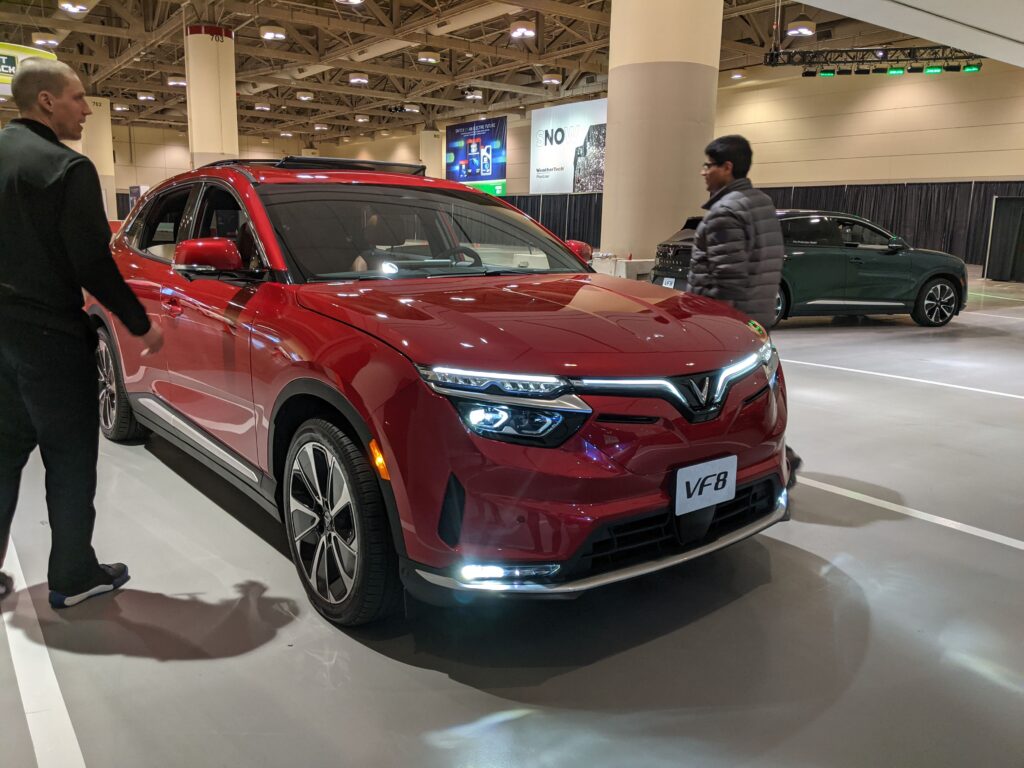
Powertrain & Early Driving Impressions
Finally – the most important bit, the drivetrain of the VF8.
The VF8 employs a dual motor setup to provide AWD regardles of trim, and both versions utilise the same 87.7 kWh (usable) battery. The base “Eco” model is rated for 349hp / 500 Nm, while the “Plus” model is rated for 402hp / 620 Nm. The CATL-made battery was initially supposed to be offered via a subscription model – however that seems to have been quietly scrapped from their pricing model for the North American market at least. Vinfast has shared that this will lead to a projected range of 264 miles (425 km) for the Eco and 243 miles (391 km) for the Plus, however the EPA official estimates in the US indicate the Eco model is estimated to have a range of 207 miles (333 km), while the Plus is estimated to travel 191 miles (307km) on a single charge.
Charging specifications seem quite hazy at this time as well. Vinfast claims that charging with a CCS2 DC charger from 10-70% will take approximately 31 minutes (in best conditions) – however they have not officially provided what is the DC charging capacity limit the VF8 accepts. These numbers seem to suggest a 150kW charger or so – based on similar recharge times with a 150kW charger on rivals with similarly sized batteries. Even from our conversations with some of the Vinfast personnel on site, we were not able to get any information regarding DC charging limits.
Vinfast also offers a home charging solution that offers up to 11kW in AC form – however they have not provided any information about AC charging speed limits or charge times so far. We estimate that the VF8 would be looking at an overnight charge time with the 11kW charger from 0-100% (based on competitors with similar electrical architecture and battery capacities). For a relatively new company in the North American market who is trying to steal sales from the hyper competitive electric SUV arena, we are disappointed that Vinfast was not able to provide comprehensive charging information for their battery electric vehicle at this time especially considering the VF8 has been in production in its home market of Vietnam since 2021.
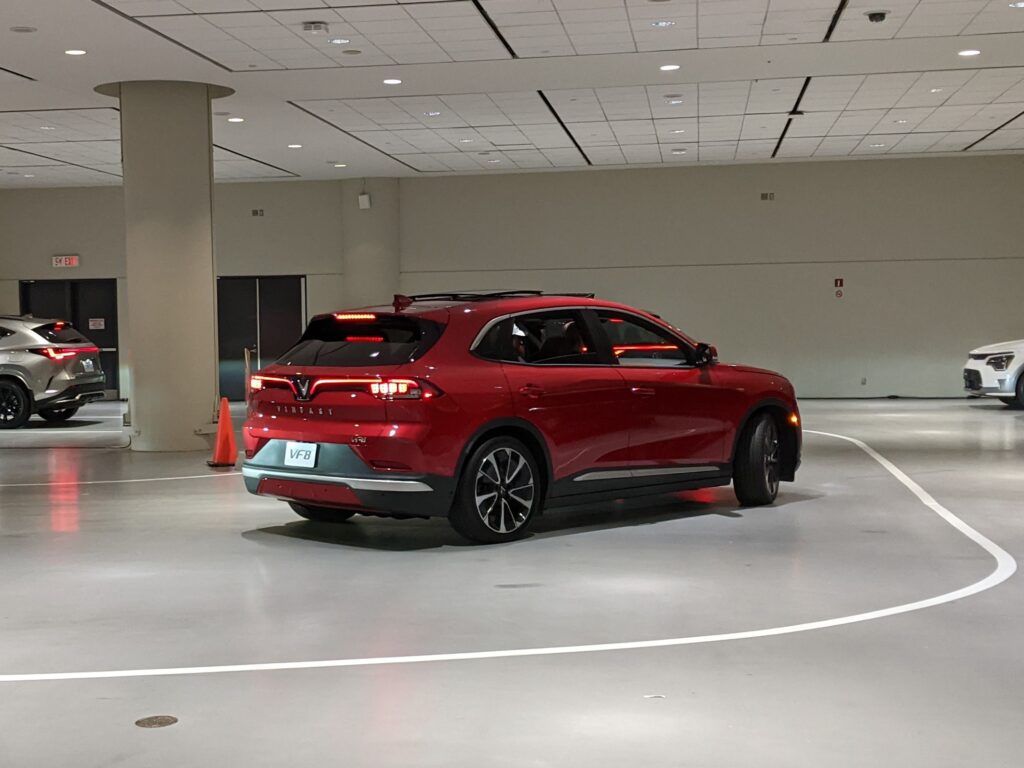
From a driving perspective – we had a short loop indoors with the Vinfast, which to be honest is tough to allow us to judge how well a car performs but it is good enough to give a brief early impression of the car. Being a closed loop with multiple other models from competitors using the same said loop, we were able to do quick back to back tests to experience the difference between each of them.
First off the bat – our VF8 Plus that we drove was supposed to be rated at 402hp / 500Nm, putting it close to the power figures and curb weight of something like a Tesla Model Y Long Range AWD or Cadillac Lyriq RWD. However, right off the line it was very clear this is no way a car with that level of power and torque. In parts of the loop where it was possible to floor the accelerator pedal, the VF8 felt slow by comparison. In isolation, the VF8 felt brisk enough, but it was no way close to the quoted power figures.
From a suspension standpoint, the VF8 comes with a standard fixed suspension system – no option for air or adaptive suspension is available for the VF8. This is not particularly surprising in this class and price range and isn’t a bad thing, as long as the suspension is tuned correctly. We had perfectly smooth flooring so it was hard to judge ride quality, however the tight turns in the mini autocross-esque track did allow us to get an impression of the VF8’s body control. At low speeds it felt fine although it did feel a little more firm compared to its Japanese and Korean competitors. Steering was generally decent, if not something to write home about. Being an electric power steering setup (of course), it was light enough to maneuver at low speeds but did weigh up decently as speed increases. However without a full road test on public roads, it will be tough to provide full judgement of the steering and suspension – though initial impressions are positive but unremarkable.
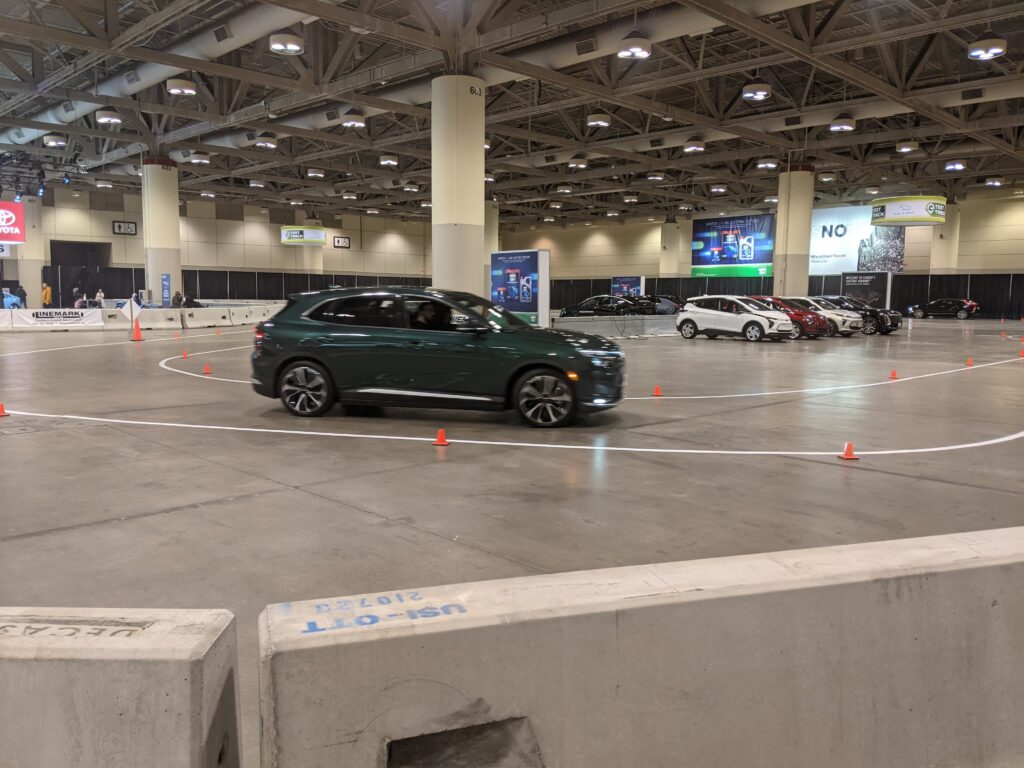
While we were impressed with the insulation at low speed with minimal motor whine – the big surprise is the constant beeps and bongs from the car while driving. For some peculiar reason, Vinfast had elected to use the same chime for all the warnings – this might be the case because the cars that we were driving were pre-production units, but in the case this was carried over to the final customer units, the constant beeps would be very annoying and more importantly, distracting to the driver. We also observed that because all the beeps (including critical ones like a door is ajar) used the same tone – we ended up having to take a glance at the screen to read the warning – which was not an easy feat because of the touchscreen’s font being not particularly legible on the move.
Regenerative braking / one pedal driving is decent as well in this application. While it lacks the very impressive adaptive regeneration that is found on newer BMW EVs that take into account your surroundings, the regeneration in High mode on the Vinfast almost allows you to drive the car in one pedal fashion and nearly bring the car to a stop. We’d likely see seasoned EV drivers feeling comfortable with the High regen mode, however in reality the Low regen mode is probably most appropriate and familiar to most existing drivers.
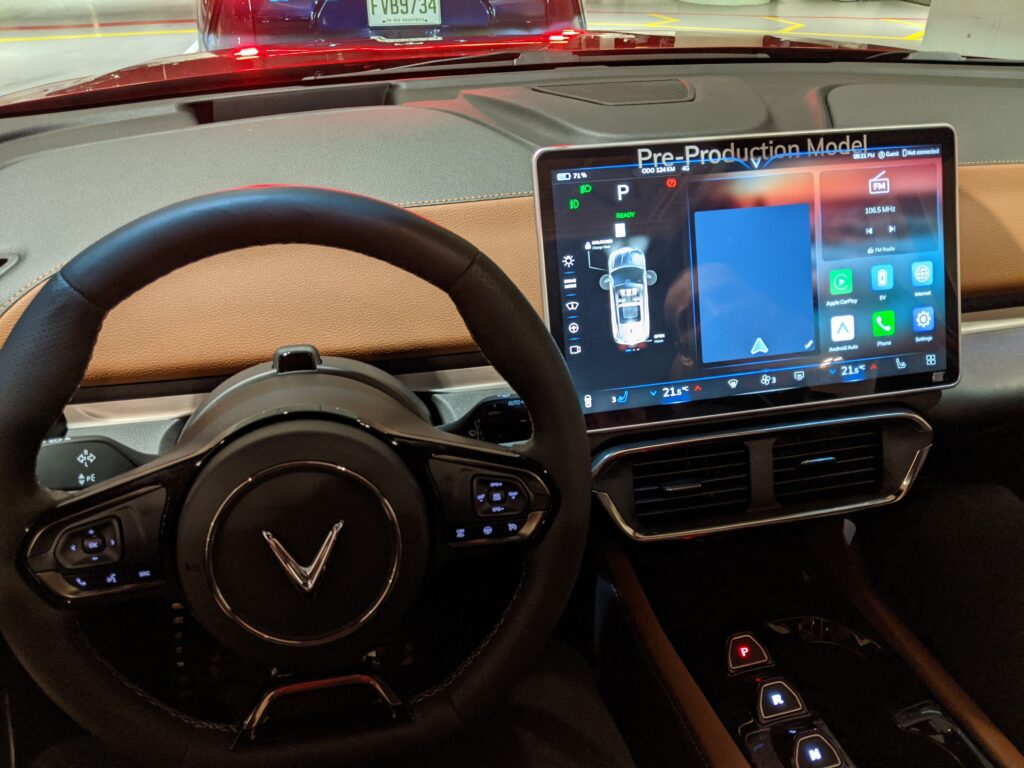
Pricing & Warranty
On every Vinfast purchase – a 10 year / 200,000 KM warranty is provided for the full vehicle – with a 10 year / unlimited mileage warranty in place for the powertrain specifically. Vinfast also throws in roadside assistance for added peace of mind, however there has been no mention of service plans / service intervals and costs at time of writing.
Pricing on the Vinfast begins as follows:
VF8 Eco 349hp (19” wheels) – CAD 53,600
VF8 Plus 349hp (20” wheels) – CAD 59,200
VF8 Plus 402hp (20” wheels) – CAD 60,700
Additional options include:
Special Paint colours (CAD 875 or CAD 1250, depending on colour – for any colour aside from the standard black or white paint, available for all models)
Brown, Beige or Blue interior (CAD 1500 – only for Plus and will replace the no-cost standard Black interior)
In Canada specifically – the Vinfast does qualify for the Federal Zero Emissions Incentive, essentially reducing the price by CAD 5000 after taxes are included (or about CAD 4424.78 before taxes in Ontario).
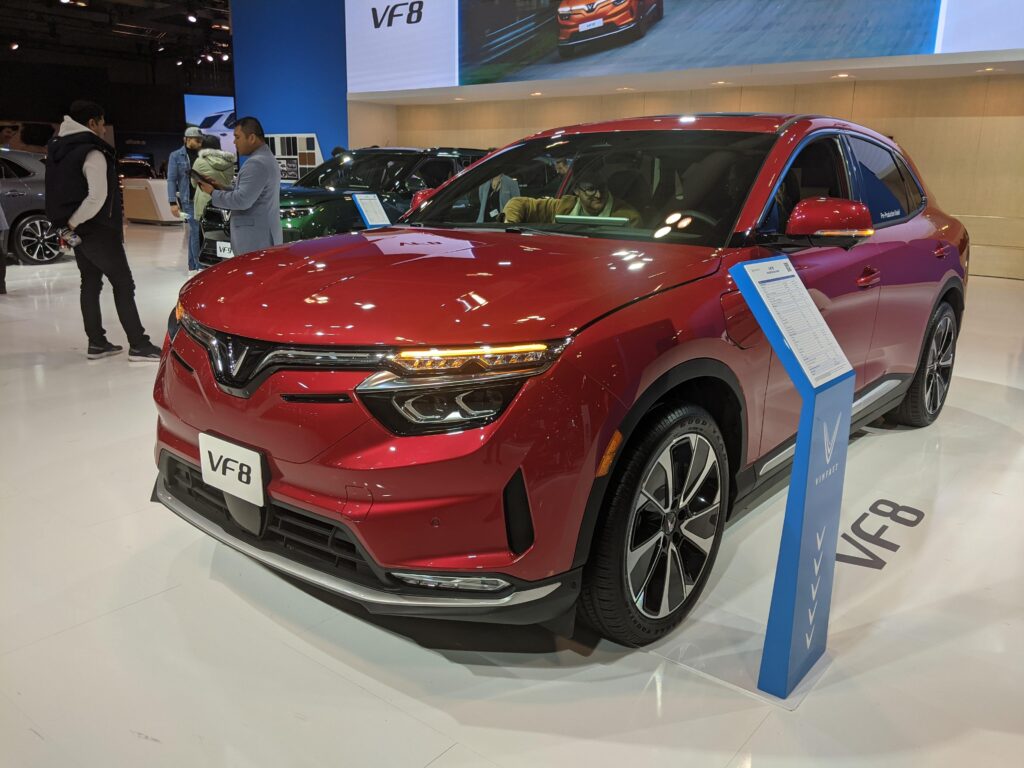
Conclusion
In summary – the VF8 is not a bad car outright. For the most part, it moves and stops decently, has a good warranty and a somewhat usable range – with AWD standard across the board. Unlike most other EVs – wait times should not be too bad either. However, the biggest catch with the Vinfast VF8 is that for the price, it is not good enough.
Let’s take an example – a VF8 Plus (402hp),without the special paint and leather would cost CAD 60,700 – before any government incentives. By comparison:
Tesla Model Y Long Range AWD (497km EPA estimated range, 19” base wheels and standard paint & interior, standard Autopilot) – CAD 67,990
Hyundai IONIQ 5 Dual Motor Long Range Ultimate (320hp, 420km EPA estimated range, 20” wheels, standard paint & interior) – CAD 65,677
When compared to the two key rivals above, the Vinfast is quite a bit cheaper without a doubt (about CAD 5000-7000 less). However, the reality is that the Vinfast does not feel like a car that is worth over CAD 60,000 – from the convoluted ergonomics, to the central touchscreen that lacked quite a bit of polish, to the paltry range per EPA tests, it’s hard to recommend anyone to try to save approximately 10% of the purchase price of a Ioniq 5 or Model Y and go for the Vinfast – especially considering that individual is already spending over CAD 60,000 on a new vehicle. The Model Y and Ioniq 5 are not perfect – Tesla’s build quality is about the same (if not only slightly better than the Vinfast), while Hyundai’s excellent Ioniq 5 has a pretty long wait list out here – but when spending that much money on a car, the little things do matter.

Vinfast is also relatively new by comparison – they are only just establishing the service network and are not available in all provinces and cities in Canada. We also do have questions around the eventual residual value of a Vinfast VF8 in a couple of years time – that remains to be unknown.
The biggest surprise for us is actually how large the gap is between Vinfast and some of the Chinese EV manufacturers that have also recently started exporting their EVs globally. Brands like BYD, Smart (Geely) and MG (SAIC) are all actively exporting EVs globally. Especially for BYD and Smart (which Geely did significant engineering on) – these two brands have undoubtedly positioned themselves as worthy competition and in some cases exceeding the standards set by brands like Tesla and Hyundai-Kia Group. Vinfast’s VF8 is nowhere near the level of say something like the BYD Atto 3 – despite the BYD Atto 3 being positioned as a cheaper offering from a price standpoint compared to the VF8.
Hence – based on all the above, we do wish Vinfast all the best, but it is going to be a tough battle in the hyper-competitive EV market if the VF8 doesn’t get polished quickly.





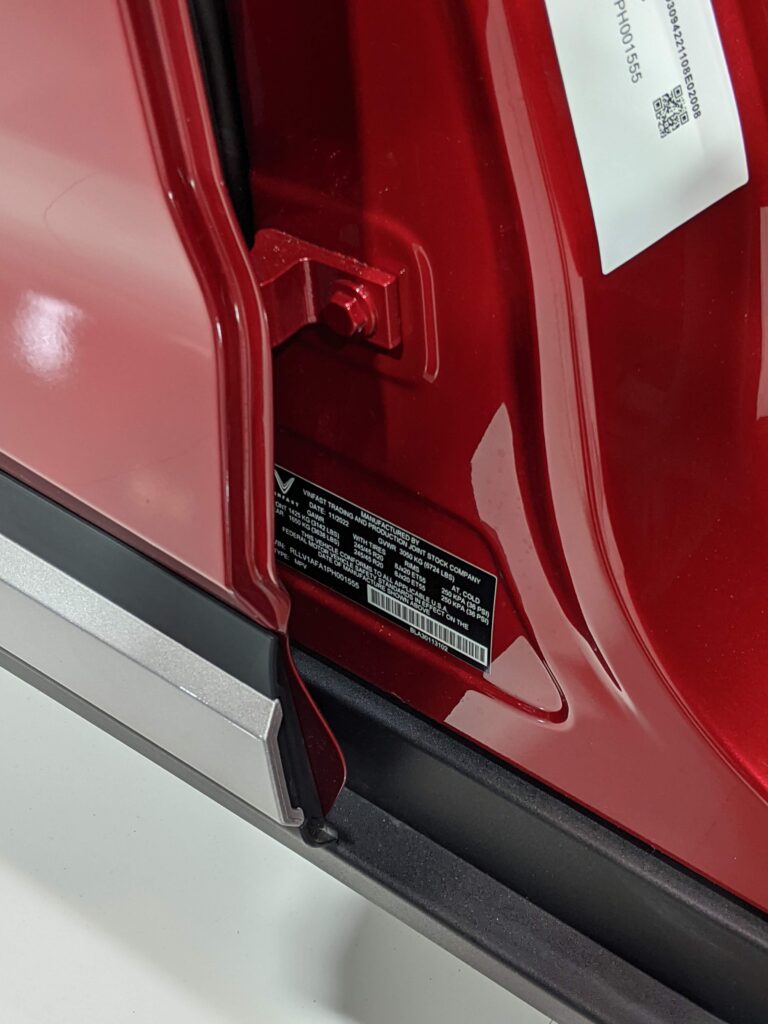

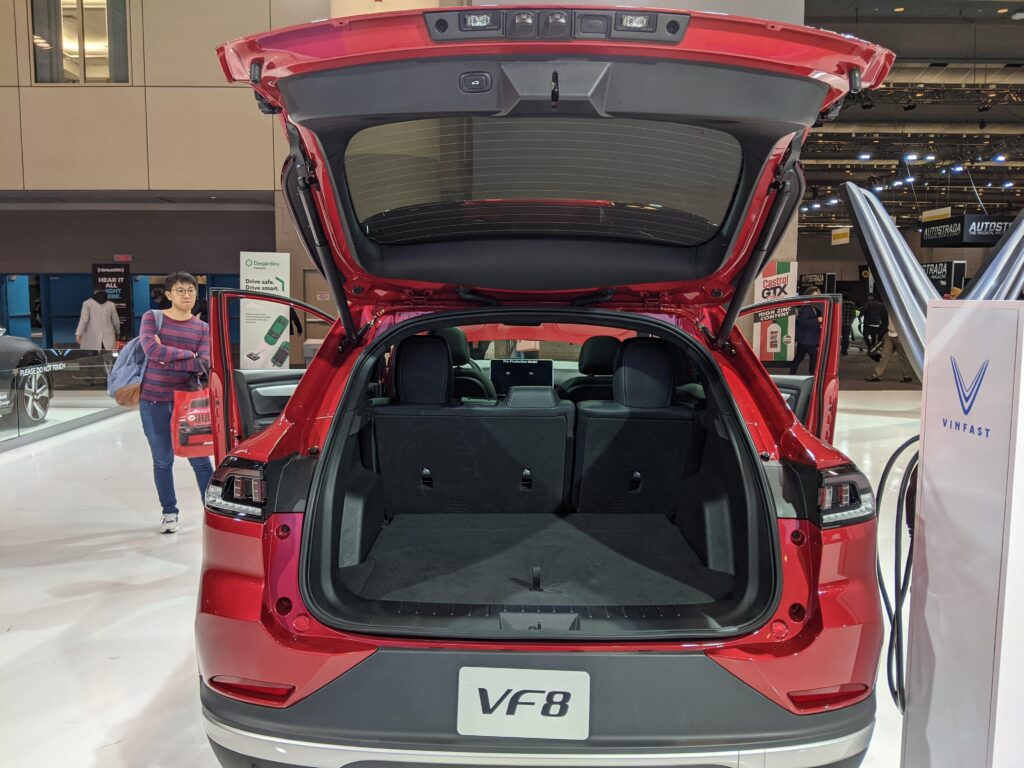








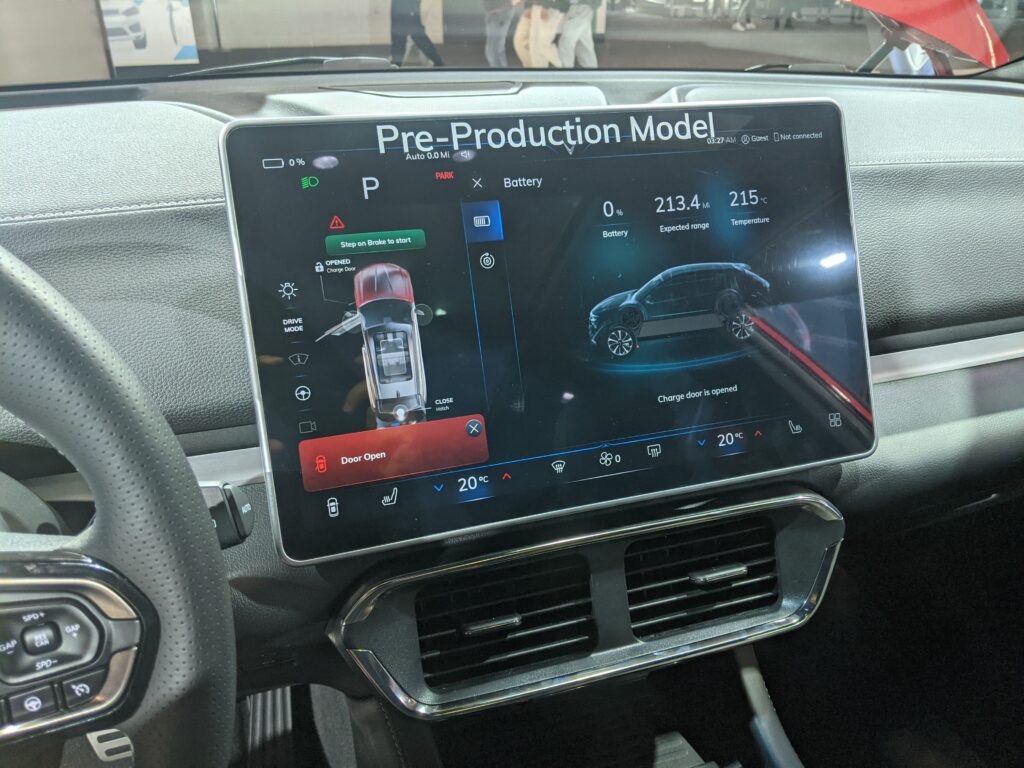
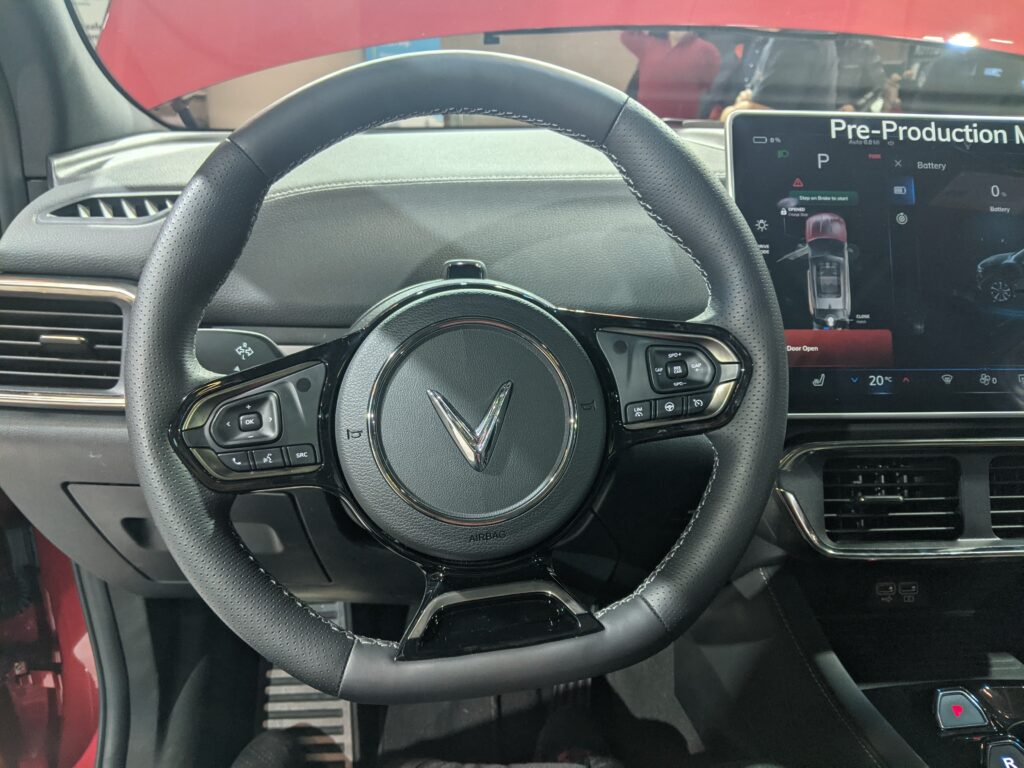



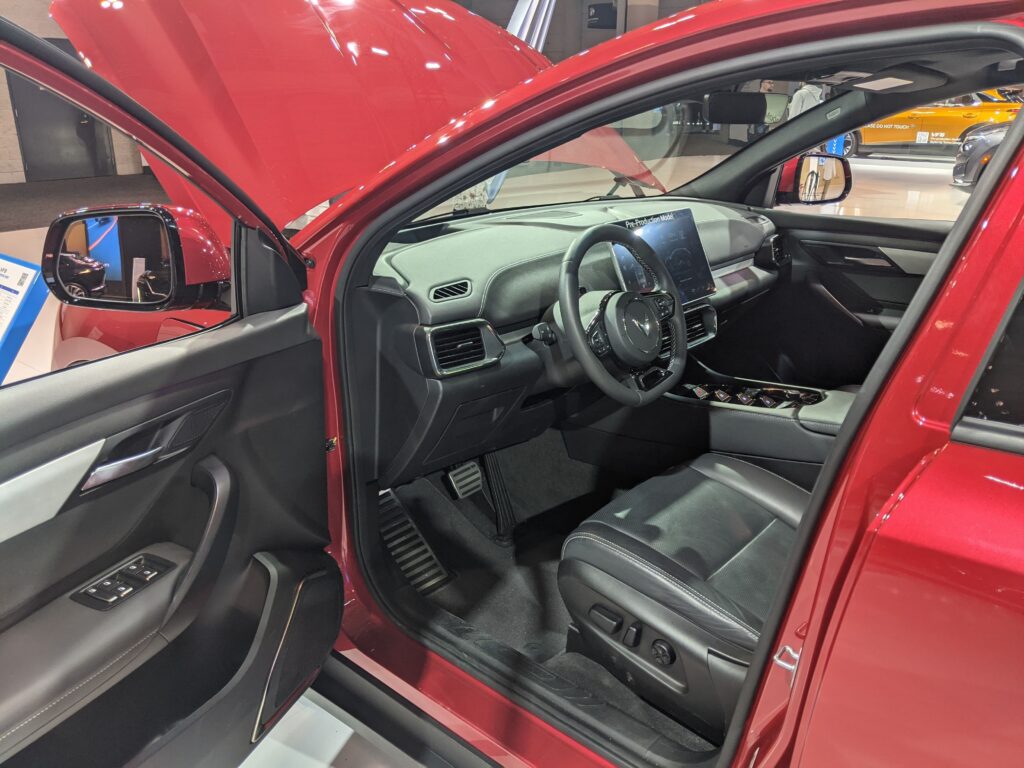





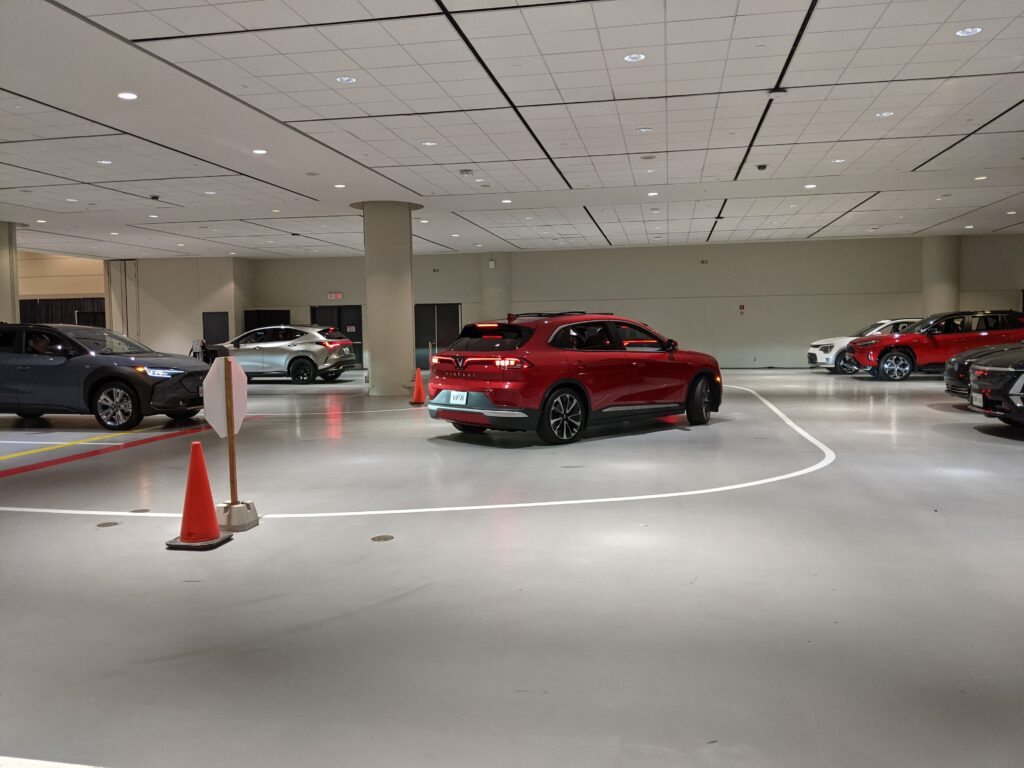
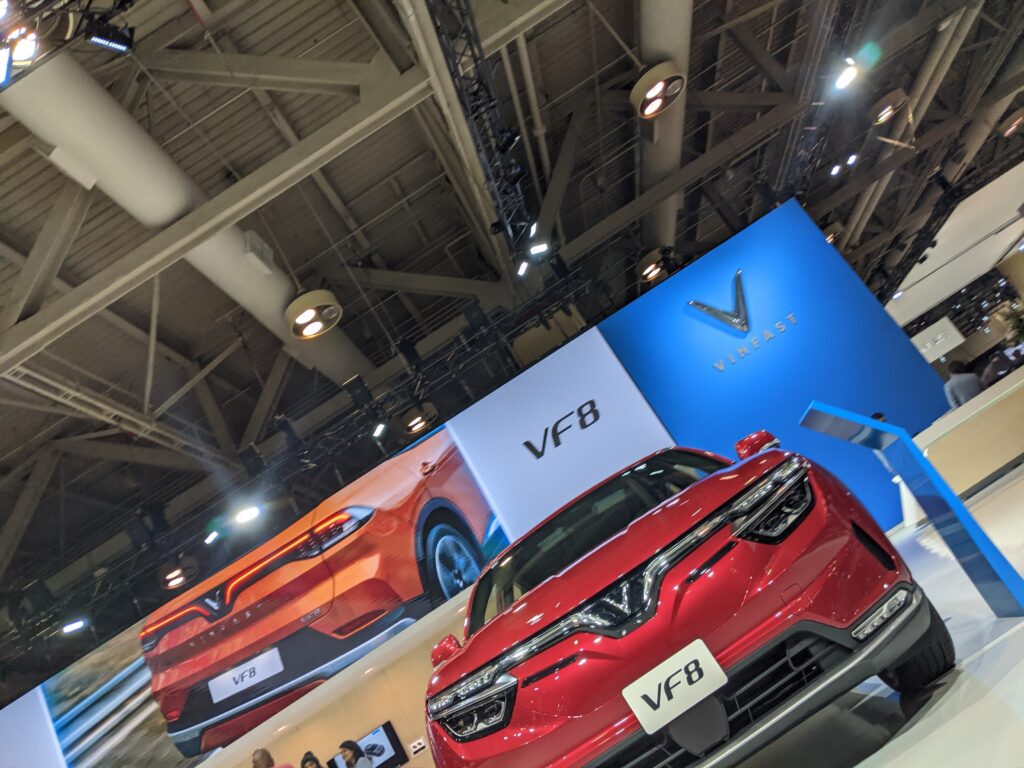
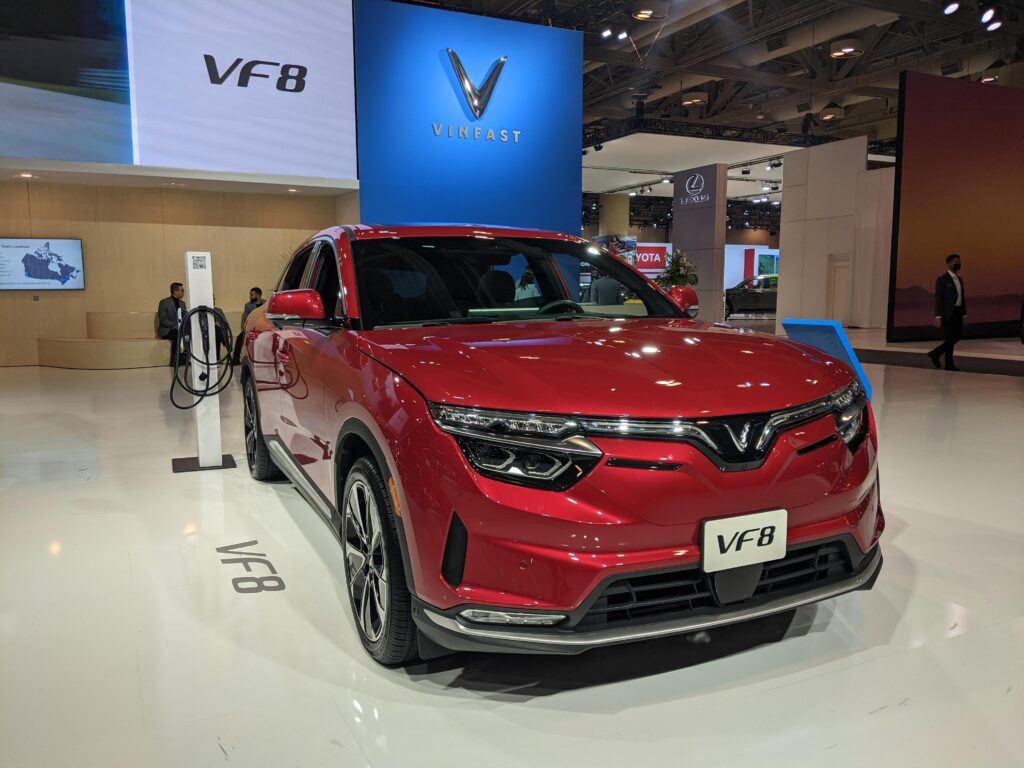
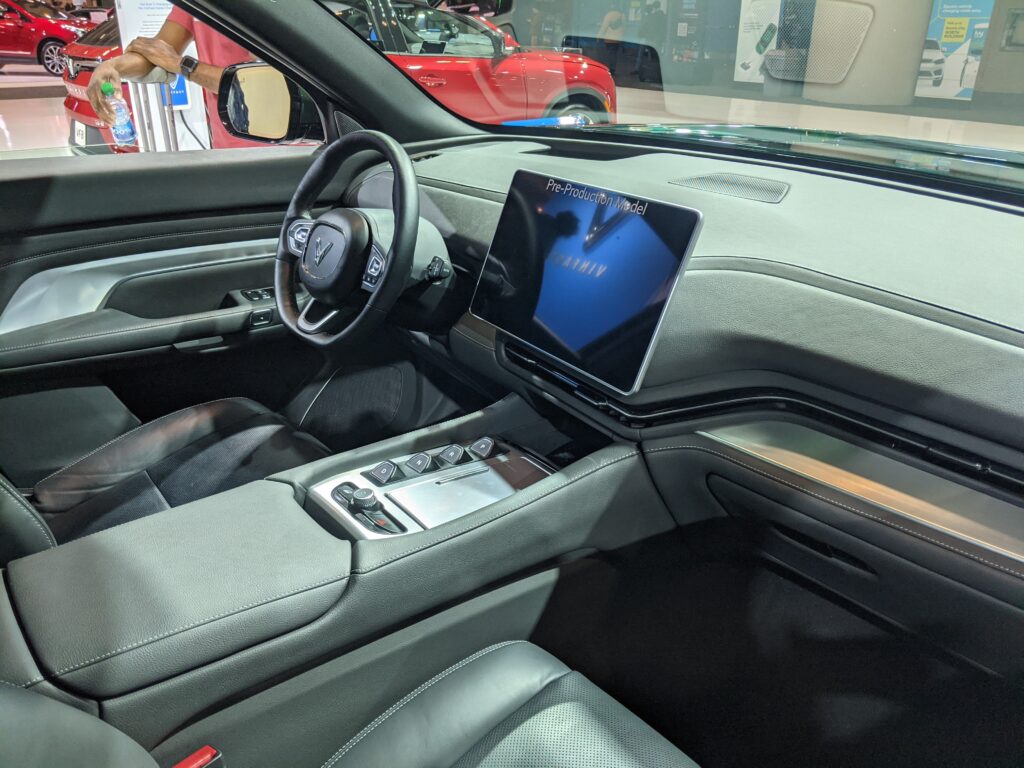
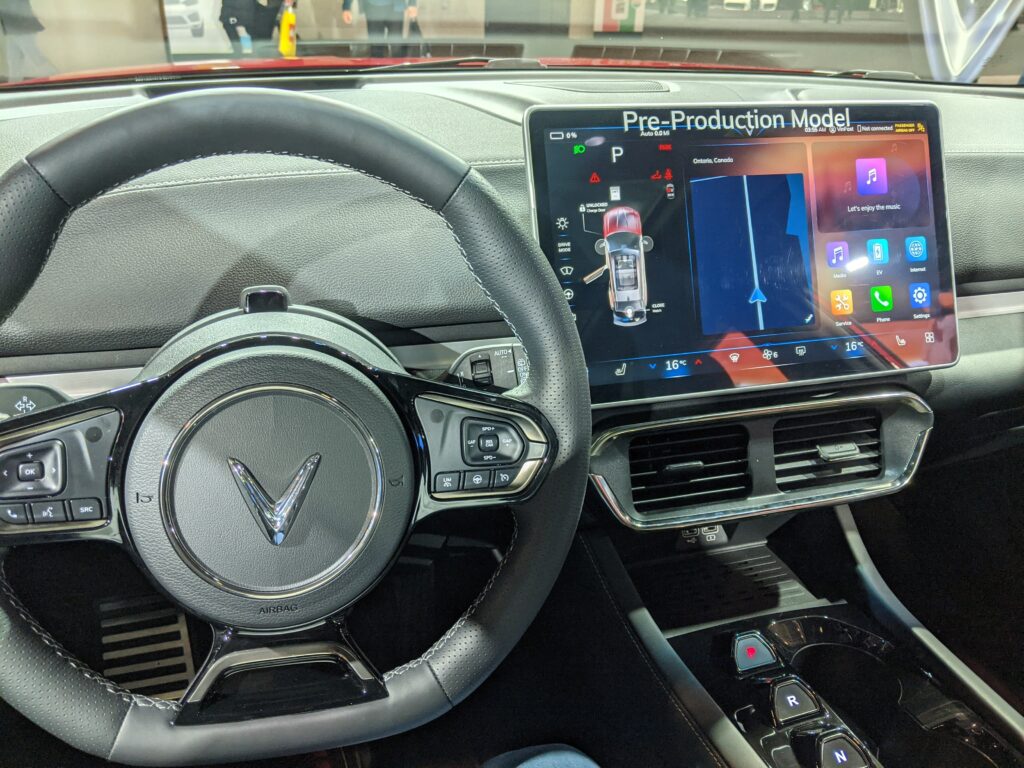




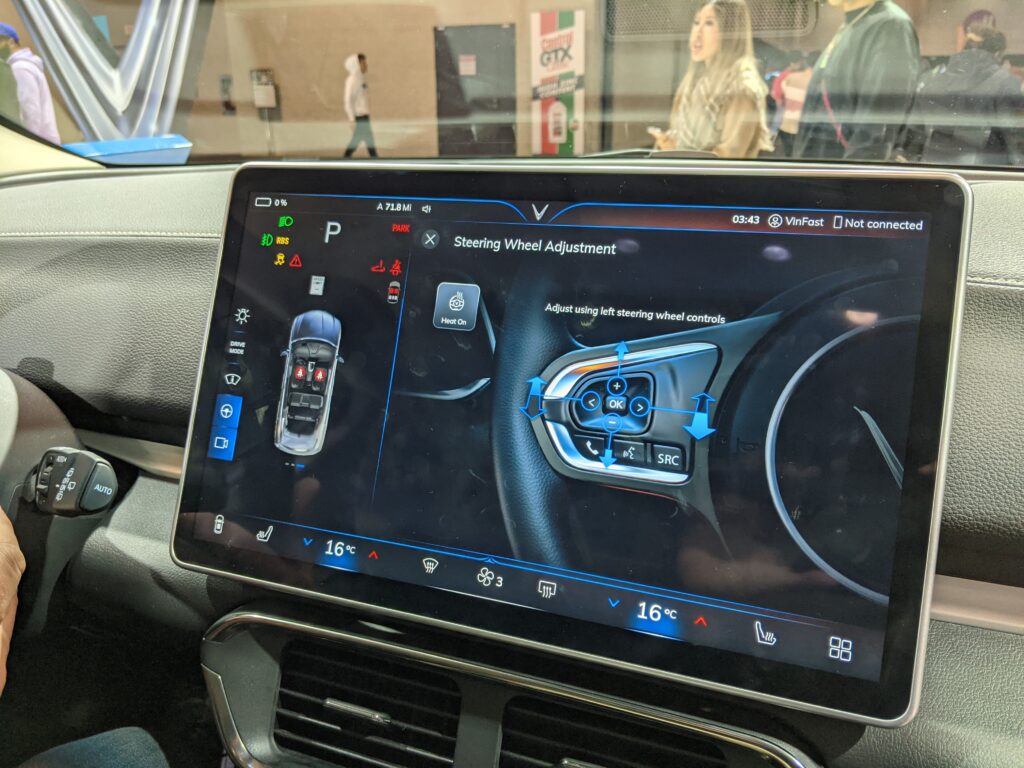
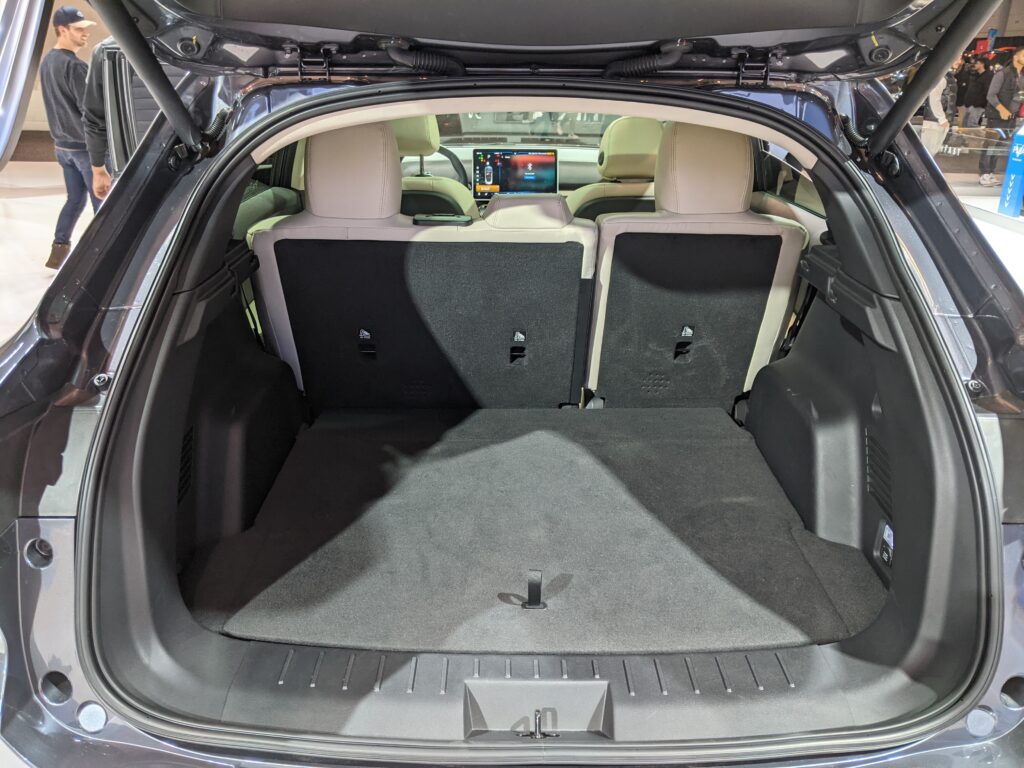
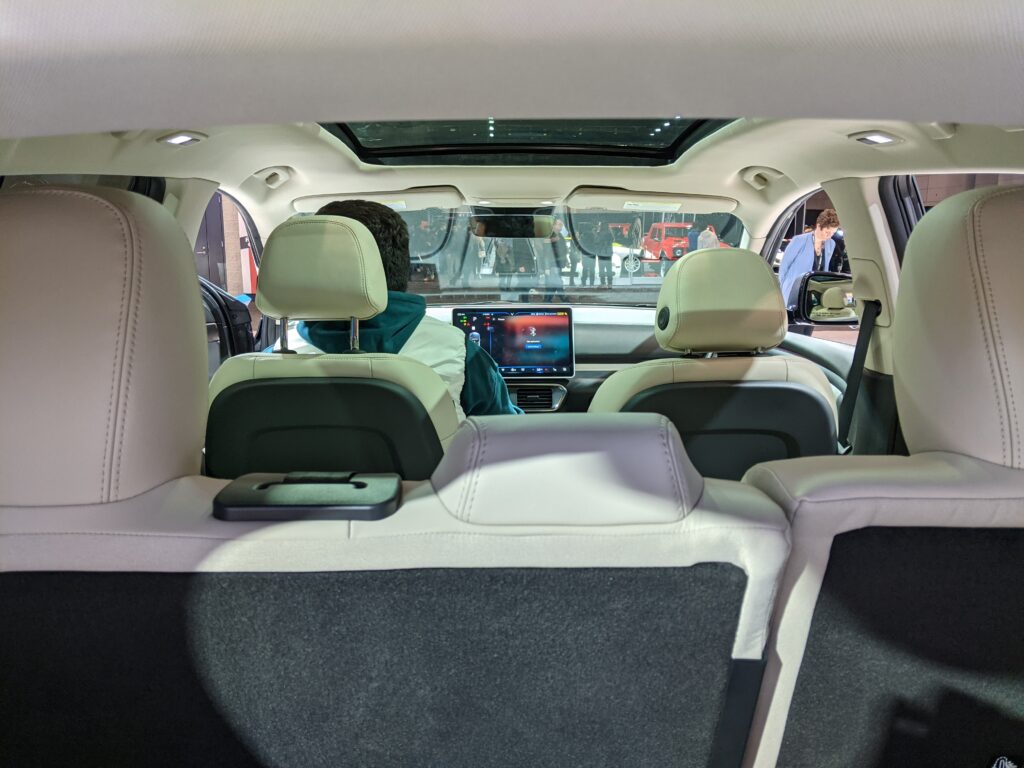

Words & photos: Kapil Haresh

